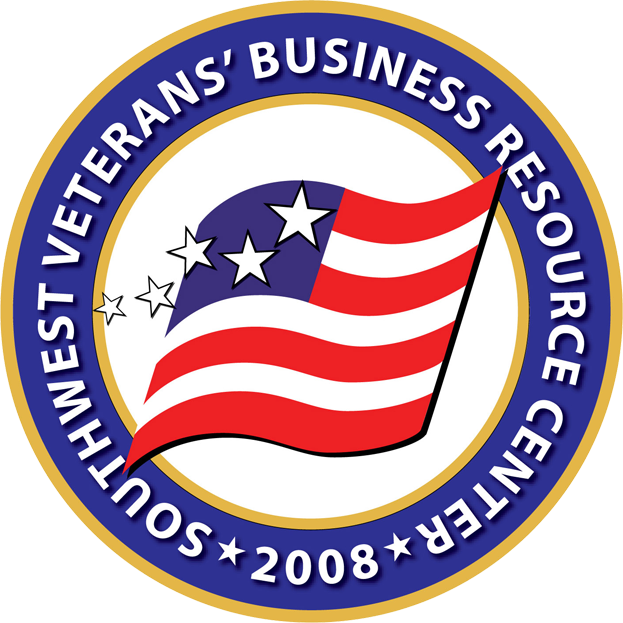|
PROPOSED REGS WOULD BEEF UP AFFIRMATIVE ACTION
OBLIGATIONS TO PROTECTED VETERANS
May 10, 2011
By Cara Crotty and Robin Shea
Columbia and Winston-Salem Offices
We recently notified you that the Office of Federal Contract Compliance Programs had issued proposed regulations designed to put significantly more "teeth" into contractors' obligations to employ protected veterans. The proposed rule, like its predecessor, interprets the Vietnam Era Veterans' Readjustment Assistance Act of 1974 and its amendments, which prohibit discrimination against certain protected veterans and require federal contractors to take affirmative steps to recruit and hire such individuals. Contractors are also required to make reasonable accommodations (using essentially the same standards and terminology in the Americans with Disabilities Act) for disabled veterans.
The proposed regulations, issued April 26, 2011, could not have been better-timed, coming almost immediately before the successful raid on Osama bin Laden's compound in Abbottabad, Pakistan. Although strenuous opposition is unlikely, the OFCCP is accepting comments on the proposed rule through June 27.
The following is a summary of the key provisions of the proposed regulations:
Who is a protected veteran?
Under the statute (with amendments) formerly known as VEVRAA (but now referred to as "Section 4212" because it is codified at 38 U.S.C. § 4212), disabled veterans, recently separated veterans, active duty wartime or campaign badge veterans, and Armed Forces service medal veterans are protected.
Why was a new rule necessary?
The current regulations have been in place since 1976, but "increasing numbers of veterans are returning from tours of duty in Iraq, Afghanistan, and other places around the world, and many are faced with substantial obstacles in finding employment upon leaving the service," according to the OFCCP. The Agency cites a report from the Bureau of Labor Statistics showing higher unemployment for veterans than for non-veterans in the 18-24 and 25-34 year-old age groups.
Which contractors are covered?
It depends. The OFCCP proposes rescinding all regulations codified at 41 C.F.R. Part 60-250 (which applies to government contracts of $25,000 or more entered into before December 1, 2003) on the ground that all of these contracts should now have expired. However, the Agency has proposed a set of "alternative" regulations in case comments reveal that rescission is not appropriate.
The rest of the proposed rule, which would amended the regulations currently codified at 41 C.F.R. Part 60-300, would apply to each government contract or subcontract of $100,000 or more that is entered into (or modified) on or after December 1, 2003. The contract must be for the purchase, sale or use of personal property or "nonpersonal services (including construction)." Contracts are not aggregated.
(Because the proposed "alternative" regulations for part 60-250 are substantially the same as the proposed regulations for part 60-300, the remainder of this bulletin will focus on the latter.)
Are there any changes to the Equal Opportunity Clause that must be included in contracts?
Yes. The clause contains a new provision that requires contractors to maintain records on veteran referrals "on an annual basis" and to keep the records for five years. The records must include "the number of priority referrals of [protected veterans] [received] from each employment service delivery system, and the ratio of priority referrals to total referrals."
The proposed EO Clause also includes a relatively minor change to the requirement that the affirmative action notice be accessible and understandable to a disabled veteran.
Also, as the OFCCP did in the proposed regulations to implement Executive Order 13496 (requiring federal contractors to post a notice advising employees of their rights under federal labor laws), it is proposing that the entire EO Clause be included verbatim in federal contracts and subcontracts. This is surprising, as the OFCCP ultimately dropped that requirement in the final rule implementing Executive Order 13496 due to complaints that it would make the contracting process more difficult. Hopefully, the OFCCP will reach a similar conclusion when finalizing these regulations.
Are there any changes to the way contractors invite protected veterans to self-identify?
Yes. As expected, the OFCCP is proposing that contractors invite applicants to self-identify as protected veterans. Despite concerns from the contractor community that such a requirement would violate the ADA because it would seek disability-related information from individuals pre-hire, the OFCCP remains insistent on this approach.
The proposed regulations would require contractors to ask all applicants to self-identify as protected veterans before receiving offers of employment. The invitation, however, would not break out the categories of covered veterans; it would request the applicant to disclose only whether he or she is "protected." The OFCCP says that it wants this data so that it can measure the number of protected veterans who apply for positions.
Once an offer of employment has been made, contractors would be required to ask offerees to identify themselves as belonging to one or more specific categories of protected veterans. If the individual self-identifies as a disabled veteran, the contractor would then be required to "seek the advice of the applicant regarding accommodation. Requiring this of the contractor will help initiate a robust interactive and collaborative process between the contractor and the employee or applicant to identify effective accommodations that will facilitate a disabled veteran's ability to perform the job." Note that this regulation would require much more than the ADA, as the contractor would be responsible for initiating a discussion even when no accommodation had been requested.
What must the veterans' affirmative action program contain?
At a minimum, the program must contain
*A policy statement, which must be posted on company bulletin boards and be "accessible and understandable" to disabled veterans and indicate the support of the chief executive officer, provide for an audit and reporting system, and assign administrative responsibility. The statement must include the contractor's affirmative action obligations, as well as no-discrimination, no-harassment, and no-retaliation policies.
*A "review of personnel processes" to ensure "careful, thorough, and systematic consideration of the job qualifications of applicants and employees who are known protected veterans for job vacancies . . . and for all training opportunities . . .." "Personnel processes" must be "reviewed" at least once a year, and the program must include a description of the annual review as well as a discussion of any changes made.
*As part of its program, "[t]he contractor must design procedures that facilitate a review of the implementation of this requirement by the contractor and the Government," focused on the ability to easily track positions for which a protected veteran was considered and the disposition. In the case of rejections, the employer must provide a written statement of the reason for rejection and (if applicable) any reasonable accommodations considered.
*The contractor must also keep track of all reasonable accommodations made for disabled veterans.
*The contractor must annually review "all physical and mental job qualification standards" to ensure that they are job-related and consistent with business necessity. The annual review must be documented, including the methodology used, the results of the review, and any action taken as a result of the review.
*If a physical or mental qualification standard screens out a disabled veteran, the burden is on the contractor to prove that the criterion was job-related and consistent with business necessity.
*If the contractor believes that a disabled veteran poses a "direct threat" within the meaning of the ADA, the basis for that belief must be documented and must address each of the following: (1) the duration of the risk; (2) the nature and severity of the potential harm; (3) the likelihood that the potential harm will occur; and (4) the imminence of the potential harm.
*Needless to say, the contractor must make reasonable accommodations to disabled veterans except in the case of undue hardship.
*There must be procedures to prevent harassment of employees based on their status as protected veterans.
*A "data collection analysis" (see below).
Are the recruitment and outreach efforts different?
Yes. The Agency notes that "[p]erhaps the most significant substantive changes in the proposed rule address the scope of the contractor's recruitment efforts and the dissemination of its affirmative action policies. . . ." The proposed requirements include the following:
*The contractor must establish "linkage agreements" and ongoing relationships with the Local Veterans' Employment Representative in the employment service office nearest the contractor's establishment.
*The contractor must also enter into a linkage agreement with at least one of a "menu" of organizations that help to recruit and train veterans, such as the Department of Defense Transition Assistance Program.
*The contractor must consult the Employer Resources section of the National Resource Directory (a partnership among the Departments of Labor, Defense, and Veterans Affairs) and establish a linkage agreement with at least one of the organizations listed.
The contractor would be required to review its recruitment efforts annually and evaluate their effectiveness in identifying and recruiting qualified protected veterans. This review must be documented and should include the number of protected veteran candidates each effort identifies. "The contractor's conclusion as to the effectiveness of its outreach must be reasonable as determined by OFCCP. . . ."
How must the contractor communicate about its affirmative action program and policies?
*The contractor must make "outreach efforts," including briefing sessions with recruitment sources, attempting to reach protected veterans when recruiting at schools, and participating in work-study programs with rehabilitation facilities run by the Department of Veterans Affairs. These outreach efforts must be reviewed annually by the contractor, and the review must be documented. If the contractor determines that its efforts were not effective, it must "identify and implement" additional efforts.
*The contractor's affirmative action policy must be communicated internally, including (1) publication in the policy manual; (2) annual meetings with all employees to discuss the policy and identify opportunities for advancement; (3) meetings with executives, managers, and supervisors to explain the policy and their responsibility for implementing it, as well as the chief executive officer's support for the policy; (4) "thorough" discussion of the policy in new-employee orientation and management-training programs; and (5) if applicable, meetings with unions or employee representatives to discuss the program and request cooperation. In addition, the policy should be highlighted in company publications. The company's internal dissemination efforts should be documented and retained.
*The contractor must establish an auditing and reporting system, including documentation of efforts made to establish the system and the contractor's results.
*All personnel involved in any type of "Human Resources" activity (recruiting, screening, selection, promotion, discipline) must be trained on the contractor's affirmative action obligations.
What is a "data collection analysis," and is this something new?
We'll answer the second question first: YES. The proposed regulations require that the contractor collect the following data, which must be documented annually and retained for five years:
*The number of priority referrals of protected veterans from employment service delivery systems
*The number of all referrals from employment service delivery systems
*The priority "referral ratio" of veterans to non-veterans
*The number of applicants who self-identified or were otherwise known as protected veterans
*The total number of job openings and total number of jobs filled
*The ratio of jobs filled to job openings
*The total number of applicants for all jobs
*The ratio of protected veteran applicants to all applicants
*The number of protected veterans hired
*The total number of applicants hired
*The ratio of protected veteran hires to all applicants hired
Do the proposed regulations include any type of veteran hiring "goals"?
Yes, but they're called "hiring benchmarks." Each year, the contractor must assign a percentage of total hires that it seeks to fill with protected veterans, taking into account (1) the average percentage of veterans in the civilian labor force in the contractor's state for the past three years, as calculated by the BLS; (2) the number of veterans who participated in the employment service delivery system in the contractor's state for the preceding four quarters, as calculated by the Veterans' Employment and Training Service; (3) the contractor's referral, applicant, and hiring ratios for the preceding year; (4) the contractor's recent assessments of the effectiveness of its external outreach and recruitment efforts; and (5) "any other factors" that might be relevant.
Of course, the contractor must document its benchmarks and details regarding how they were adopted and the weight given to each of the criteria above. The documentation must be retained for five years.
This sounds a lot like what I had read earlier this year about the DOL's "Plan/Prevent/Protect" program. Am I dreaming?
Probably not. Plan/Prevent/Protect, which has not formally been implemented yet, would require employers covered by certain federal laws to review their processes for compliance with the applicable laws, including any deficiencies, and take steps to remedy the latter, documenting everything. It appears that the proposed veterans' regulations are the first formal step by a DOL agency to put such a requirement into place.
What can I do if I want to comment on these proposed regulations?
As stated above, you can comment on line, or you can mail your comments to
Debra A. Carr, Director
Division of Policy, Planning, and Program Development
Office of Federal Contract Compliance Programs
Room C-3325, 200 Constitution Avenue, NW
Washington, DC 20210
If your comments are six pages or less, you can fax them to 202-693-1304.
What can I do if I want more information about these proposed regulations?
If you need assistance with the proposed regulations, or with any other affirmative action matter, please contact any member of Constangy's Affirmative Action Practice Group, or the Constangy attorney of your choice.

Constangy, Brooks & Smith, LLP has counseled employers on labor and employment law matters, exclusively, since 1946. A "Go To" Law Firm in Corporate Counsel and Fortune Magazine, it represents Fortune 500 corporations and small companies across the country. Its attorneys are consistently rated as top lawyers in their practice areas by sources such as Chambers USA, Martindale-Hubbell, and Top One Hundred Labor Attorneys in the United States, and the firm is top-ranked by the U.S. News & World Report/Best Lawyers Best Law Firms survey. More than 130 lawyers partner with clients to provide cost-effective legal services and sound preventive advice to enhance the employer-employee relationship. Offices are located in Alabama, California, Florida, Georgia, Illinois, Massachusetts, Missouri, New Jersey, North Carolina, South Carolina, Tennessee, Texas, Virginia and Wisconsin. For more information, visit www.constangy.com.
For a printer-friendly copy of this Affirmative Action Alert, click here.
|
 A welcoming home for our Troops.
A welcoming home for our Troops.

